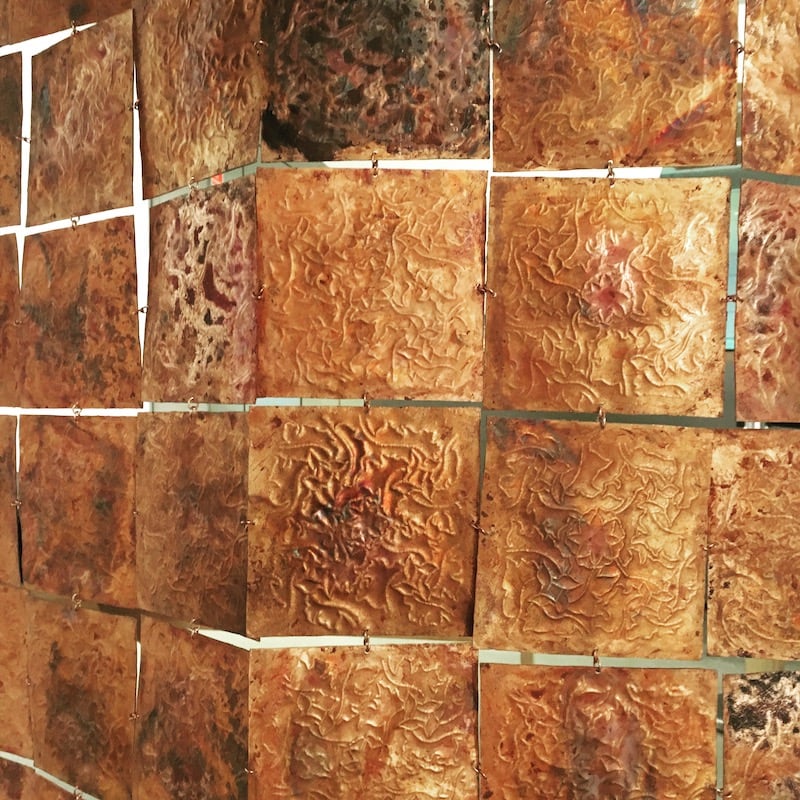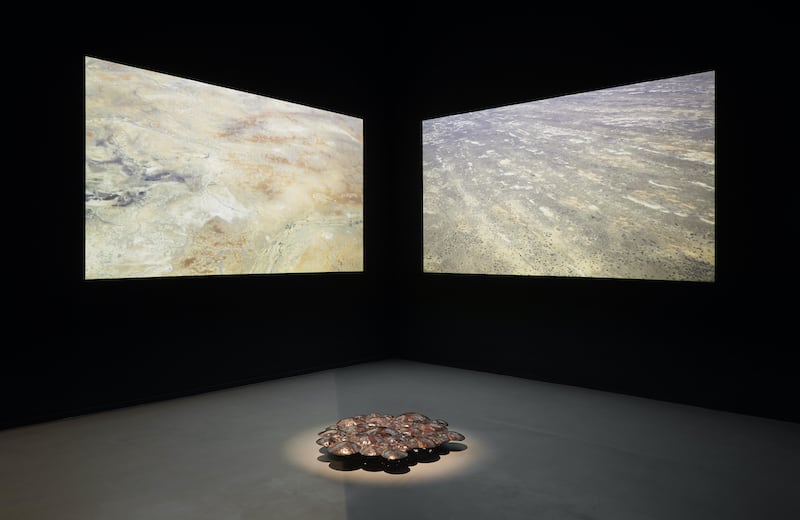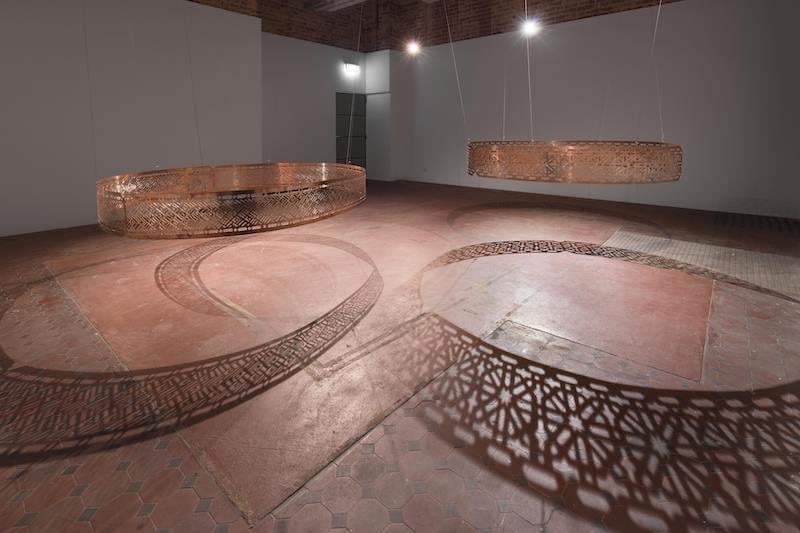
Franz Kafka’s short story ‘The City Coat of Arms’ (1931), begins with a group of people who all agree that it would be a great idea to build a tower. ‘At first all the arrangements for building the Tower of Babel were characterized by fairly good order ... perhaps too perfect.’ Arrangements are made for the construction and ‘thought given to guides, interpreters, accommodations for the workmen, and roads of communication, as if there were centuries before one to do the work in.’
Soon things begin to go wrong. For one, the scale of the project is mind boggling, difficult to conceptualise, let alone plan. Distracted by minor disagreements, the builders resolve to erect a great city to support the construction of the tower, an undertaking which only further distracts them. Soon they descend into fighting among themselves and, over the years, the builders lose focus. Generations later, the descendants of the builders have long since realised the futility of their task, but by then they had grown accustomed to living in the city, in the shadow of their tower’s ghost. The tower is never built, and the people of the city spend their days longing to be destroyed by a giant fist from heaven.
I once came across an aphorism Kafka wrote, in his final years. He was recovering from tuberculosis and was staying with his sister in Zürau, a small town in northern Bohemia. He became obsessed with aphorisms and scribbled incessantly in notebooks that his friend and posthumous guardian of his papers, Max Brod, called The Blue Octavo Notebooks (1948). Repetition, ritual, minute changes in conditions accommodated for in methodical procedure: these are ideas Kafka continuously returns to in these aphorisms. ‘If it had been possible to build the Tower of Babel without having to climb it, that would have been sanctioned,’ he wrote. In another aphorism he points out the futility of any quest for mastery: ‘Like a path in autumn: no sooner is it cleared than it is once again littered with fallen leaves.’ Deleuzian academic and novelist Michael Cisco, who maintains a small blog where he has collected many of Kafka’s aphorisms, provides a tentative reading:
In the usual interpretation of the parable, the Tower is a blasphemous attempt to rival or to reach God, and man is punished for this presumption. Kafka doesn’t present an opposing interpretation, he qualifies the existing one in a way that utterly shifts its footing when he suggests blasphemy arises wherever God’s presence is mistaken for a barrier or a distance.1
A few years ago, when I was working as a producer, I received an email from a gallery in Melbourne inviting me to the launch of Western Sydney-based Lebanese-Australian artist Shireen Taweel’s solo exhibition fractured//fluid terrains (2017). Her work was striking, and immediately undeniable. Large sheets of copper, arranged in intricate geometric patterns, all pierced and cut by hand. Her work felt like a fresh reconciliation of some kind; a fruitful exploration of a large and potent ambition. I’ve always found that the books I am reading and the art I’m engaging with in the periods just before I start a writing project are among the most fruitful and deep relationships I have; the deepest, I feel, that it is possible to have with art. For a long time, I used to be hyper-aware of this: I would want to read everything and see everything and settle every possible thought before I had even written a single word. Nowadays, I’ve grown to let myself live a little. I didn’t get to see Shireen Taweel’s exhibition that year (among other things, my car was stolen around that time so I was a bit distracted for a few weeks.) To my good fortune however, a year later I was at The Substation, a visual and performing arts venue in Newport, on an unrelated matter, when I saw a large poster featuring a thin copper sheet, pierced in precise geometric patterns. It was a poster for a solo exhibition by Taweel, tracing transcendence (2018), which would be part of that year’s Next Wave Festival. It felt to me a supreme serendipity, although in retrospect it was perhaps inevitable.
For most of human history there were only a few sources of copper available to us: a few bright blue and green stones and minerals, rich in copper, found in ancient forests and rocky outcrops. When one such mineral, malachite, is heated to sufficiently high temperatures, the copper ions become freed from the carbon, hydrogen and oxygen that bind them. The flame undergoes a stunning transformation: it glows orange, and the flame sputters before turning bright green. For thousands of years, humans huddled over small earthenware kilns, often constructed ad-hoc and on-location as the ore was found, gazing into glowing blue rocks, green fire clarified into white heat, which slowly turned the ore to liquid metal. Who can deny that this is real magic? Before the discovery of bronze, copper was used for almost everything; despite that, it made a poor tool on account of its softness and malleability. In fact, copper is so malleable that a thin sheet can be pierced with a simple steel engraving tool and a hammer.
There are some places on Earth that can trace a more or less unbroken chain of copper and bronze-smiths, going back to among the very first, thousands of years ago. One of those places, Gaziantep, in Turkey, is one of the oldest continuously inhabited places on Earth, with a history tracing from the Neolithic era, to the Bronze and Hellenistic ages, to the Ottoman period, right up to now. Taweel, who writes about her visit to Gaziantep, is sensitive to this, but at the same time she sees the transformative, ever-transitional nature of craft, of practice, of, as Kafka would put it, the path found and found again.
Ambience emanates from the enduring presence of an exquisite decorative practice. The tapping of the artisan accompanies lively conversation. The cats with their white fur coats dulled by a soft ashen dusting, bear the characteristics of the coppersmithing artisans. Their gritty magnetism and energetic wily playfulness is the heart of old Gaziantep in Turkey ... there is a depth to the symbolic representation and relationship, harmony and spirituality expressed through the refined execution of lines which have the eyes swirling like a dervish performer.2
In Gaziantep, Taweel spends weeks learning the basics of Turkish arabesque copper engraving and design, under the watchful eye of the head Coppersmith, Salman.
He teaches the correct way to hold the steel engraving tool and the angle on which to hold the tool in order to remove the appropriate amount of copper without going too deep or remaining too shallow. The hammer tapping is of paramount importance to the fundamental technique of engraving a smooth line: symmetry is very important. The tap has to be quite firm and there has to be a constant steady flow to ensure the line is engraved even throughout.
Perhaps that is what draws me to Taweel’s installations: the weight of all of human history in the very substance of her work; the intricate, repetitive detail; the way I can’t help but feel a deep sense of harmony and appropriateness at the minute contours traced on metal by a human hand, which resolve into a pleasing whole. In a recent artist talk with curator Reina Takeuchi of 4A Centre for Contemporary Asian Art in Sydney, Taweel touches on this aspect of her work, which is directly inspired by the simple, makeshift architecture of the first Australian mosques, built by Afghan camel-herders in Maree and Broken Hill.
These first mosques were very much about community members coming together to build a space for their people, using very local, very vernacular Australian materials to have their cultural practices within their community ... all these things I feel come back to not just transformation, but also the sacred and transcendence. I really held onto this process and investment in handmade copper, [because] it speaks back to lived experience through process.3
**
Recently, I’ve entered a rare fertile period in between major writing projects. For the past few years I have been working on a novel, which, at present, is not so much completed as settled in my mind. I don’t know what will come of it. In the meantime, I have completed a short story I began writing late last year, part of a series concerned with the same sorts of ideas as my novel — namely, the limits of vision and language; the distance between what is meant and what is heard.
I feel my next project is taking shape: it will have something to do with the Argentinian poet, short story writer and essayist Jorge Luis Borges; it will have something to do with metaphor, and memory. I am anticipating several problems with this next project. For one, I’m still not sure about memory. I’ve written essays, memoir pieces and stories that dramatise certain ongoing concerns in my life, and each time I tell myself it will be my last; surely now I am done. And each time I return, not only because I am not done (I don’t think I will ever be done), but because the alternative, a life apart from these concerns, is another kind of exhausting.
Jorge Luis Borges’s vision began to decline when he was in his thirties, during the third decade of the twentieth century. By his late fifties he was almost completely blind, except for the colour yellow (‘the colour of the tiger,’ he remarked once). He was active throughout this period, with the help of his mother Leonor Acevedo Suarez, who was his secretary and primary caregiver, along with a rotating group of friends and visitors who would read to him. Borges’s blindness was not sudden, or unanticipated. His father was blind, and so was his grandmother and great-grandfather. In a 1977 lecture, he described his blindness as ‘modest.’
In my case, that slow nightfall, that slow loss of sight, began when I began to see. It has continued since 1899 without dramatic moments, a slow nightfall that has lasted more than three quarters of a century.4
For Borges, his blindness provided a rare opportunity to engage with literature anew. He writes: ‘I have always known that my destiny was, above all, a literary destiny — that bad things and good things would happen to me, by that, in the long run all of it would be converted into words.’ To him, the work of a writer is the work of a life: ‘A writer lives. The task of being a poet is not completed at a fixed schedule ... whoever is a poet is always one, and continuously assaulted by poetry.’
For me, this mode of thinking has never been, as Borges describes it, a ‘continual assault’ but, rather, a continual astonishment. And it is, I think, this feeling that I find hardest to translate into writing: of feeling something deeply, but in such a way that precludes words, that almost sidesteps words altogether. This feeling is different from the desire to scream out of frustration, or being silenced by awe; those are related affects. But where they differ is that when I am silenced by art, I feel as if I am engaged in discourse beyond words, whereas when I am silenced by the desire to scream, it is a terminal silence.
**
When I finally went to Taweel’s exhibition tracing transcendence, I had not anticipated hearing the adhan over the speakers as I walked from room to room. For Taweel, the adhan, along with the high-pitched sound of the wind, taken during field recordings of the local landscape around Maree, is intended:
almost like an electric current which comes back into the material of copper, connecting these sites and spaces across Australia and also time ... [the] adhan was recorded in Turkey and Lebanon and here in Western Sydney. And I really wanted that interplay of not just time, but space and these connections that we hold within us.
I spent the longest time in front of a pair of giant sheets of copper coiled in a circle, suspended mid-air. I felt the work contained the entire concept of a mosque within it: the subtle, repetitive geometric patterns, holy symbols made real in the negative space across the surface of the copper, distorted yet whole in its shadow, which orbited the circumference of the sheets like planets. The copper was almost glowing, simultaneously bright and dark, a transitory state between brown and orange and light. Not so much the colour of the tiger, but perhaps the border between the broadest stripes across the tiger’s back, where black turns to orange and black again.


